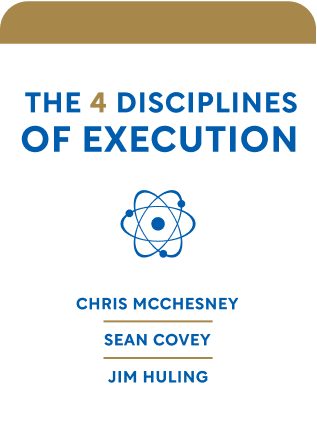

This article is an excerpt from the Shortform book guide to "The 4 Disciplines of Execution" by Chris McChesney, Sean Covey, and Jim Huling. Shortform has the world's best summaries and analyses of books you should be reading.
Like this article? Sign up for a free trial here .
Are you trying to implement the 4DX model in your organization? How many teams are you trying to target at once?
The 4DX model is a long-term process that can be scaled for implementation across an organization. However, it is more challenging to roll out 4DX on a large scale than it is to get it working with individual teams.
Keep reading for more about the 4DX model and things to keep in mind if you’re looking for wide-scale implementation.
Large-Scale Implementation fo the 4DX Model
There are three things to keep in mind with the 4DX model:
- 4DX isn’t a one-off event, it’s a long-term process with six steps.
- Start with a pilot that includes a maximum of 20 teams. These teams must be able to contribute to the overall WIG (vs.isolated leaders). As the pilot teams succeed using 4DX, other teams will get interested.
- An internal leader, not an outside consultant from FranklinCovey, must implement 4DX. This is important because:
- Leaders who know they’ll have to teach something learn it more completely.
- A teacher naturally becomes an advocate for the subject.
- To advocate 4DX, leaders must lead by example.
- An internal teacher has more credibility than an external consultant.
Six-Step Process
There is a six-step process for implementing the 4DX model that works with 10+ teams at once. Steps 1-3 involve training with FranklinCovey and take six to eight weeks. Steps 4-6 take an additional three to four months.
Step 1: Find the Overall WIG
Leaders use the 4-step process in the 4DX model for determining an overall WIG. The senior leader gets to make the final decision.
Step 2: Find Possible Team WIGs and Lead Measures
Each leader chooses a team WIG using the 4-step process. Here, senior leaders guide their leaders in choosing something relevant to the overall WIG, and veto ideas if necessary. Each leader chooses team lead measures.
This step is not complete until the team members have been consulted on the team WIG and lead measures.
Step 3: Certification of Leaders
FranklinCovey teachers leaders to launch the 4DX model. They roleplay practice WIG sessions and the launch meeting, and the leaders learn:
- Scoreboard design.
- How to teach their teams a basic understanding of 4DX.
- How to communicate the WIGs and lead measures.
- How to get feedback and make adjustments.
Once this step is completed, leaders are certified to launch.
Step 4: Launch
Leaders hold a launch meeting and kick off 4DX with their teams. The launch meeting should last two hours. 45 minutes are for presenting 4DX and the rest of the time is used to discuss everything else including:
- The overall WIG, which is set in stone.
- The team WIGs and lead measures, which are open to feedback.
- The scoreboard design and scorekeeper assignment, which are open to feedback.
- A practice WIG session. (In addition, the team may also attend another more experienced team’s WIG session.)
Step 5: Guided Execution
The weekly process of making WIG sessions, making commitments, and scoring begins.
FranklinCovey and 4DX coaches help leaders:
- Stick to the schedule and process.
- Deal with any resistance.
- Prepare for step 6.
Step 6: Leader Meetings Every Quarter
Every few months, leaders attend a meeting with their senior leaders and report on 4DX. (A quarter is enough time to see both the lead and lag measures moving.) Make sure the most senior leaders are present to increase the sense of urgency and the pressure to produce results. For example, the governor of Georgia attended the meeting for five state government agencies.
This may be the first time certain leaders meet with senior leaders, and the first time they get to talk about their ideas and be celebrated. These meetings make leaders accountable and also give them a chance for recognition.
Five Lessons from a Successful Organizational Implementation
The following five lessons come from Dave Grissen, who implemented 4DX across Marriott hotels.
- Consider your organization’s culture. How will culture affect people’s initial response to 4DX? Will you need to generate buy-in?
- Acknowledge that it’s harder to implement 4DX in an organization that’s already doing well. When everything’s going well, people may not see the need to make any changes.
- Remember that accountability is important at the leader level too—the senior leader must keep all the other leaders in line. Team members take their cues from their leaders, and if their leader isn’t treating 4DX seriously, neither will they.
- Make sure you have enough 4DX resources. This includes talented leaders, 4DX coaches, training materials, and systems.
- Remember the ancillary benefit that 4DX increases engagement. This may change your organization’s culture—for the better.

———End of Preview———
Like what you just read? Read the rest of the world's best book summary and analysis of Chris McChesney, Sean Covey, and Jim Huling's "The 4 Disciplines of Execution" at Shortform .
Here's what you'll find in our full The 4 Disciplines of Execution summary :
- The 4 disciplines that can make any strategy a successful reality
- Why a great plan falls apart when you don't think adequately about execution
- The 6 steps you need to scale the 4DX model across an entire organization






